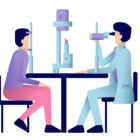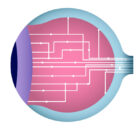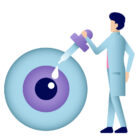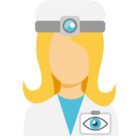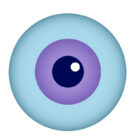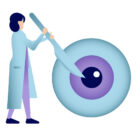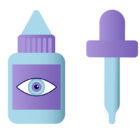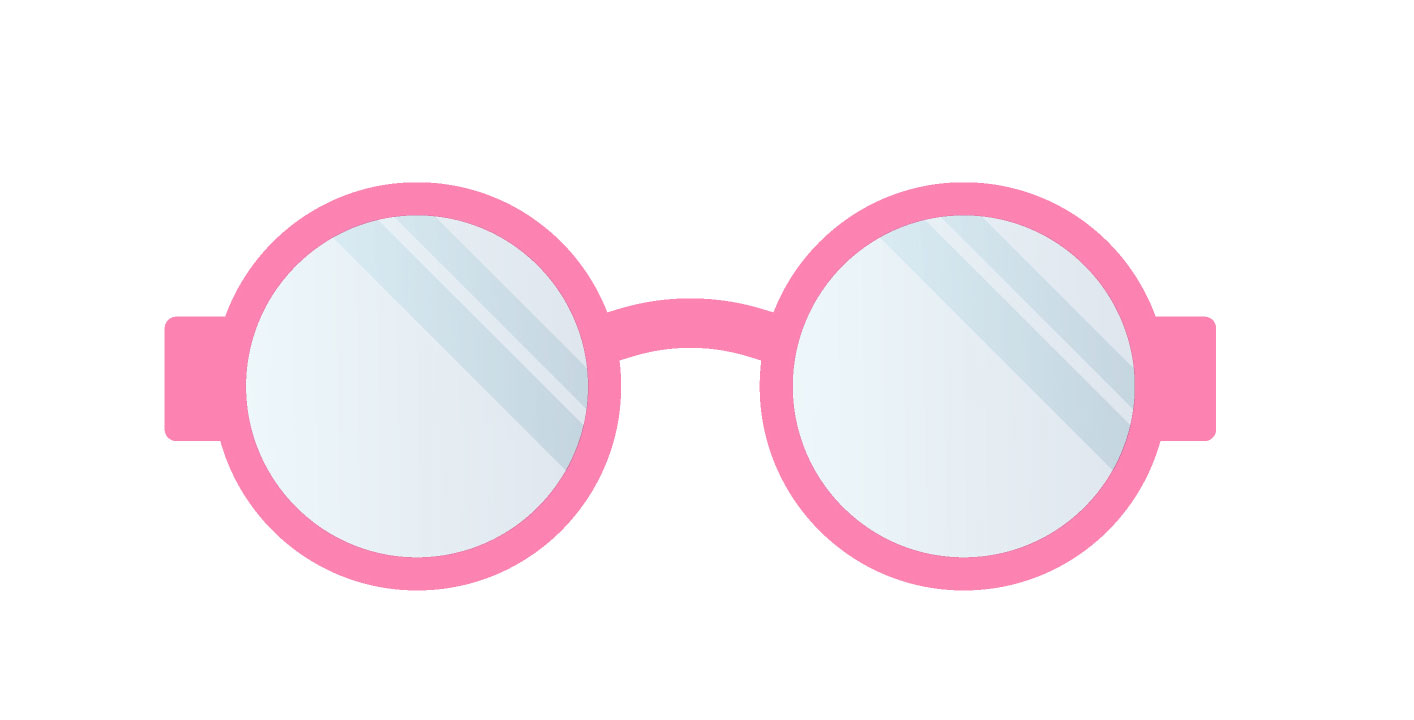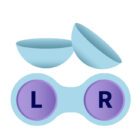Live life with a clearer vision
We at Hillsborough Eye Care, offer a comprehensive optometric service for Hillsborough, New Jersey and the surrounding areas.
Globally over 2.2 billion adults and children suffer from eye and vision related problems, more so with the advancement in technology and the onset of social media platforms. Treating these issues in a timely manner is of utmost importance, which is why we at Hillsborough have an extensive eye exam to monitor the health, wellness and wellbeing of our customers.
There are a varied range of vision issues that affect your eyesight, however, with our comprehensive diagnostic testing methods for eye diseases, evaluations, and management we assure you of personalized care to address any vision related issues.
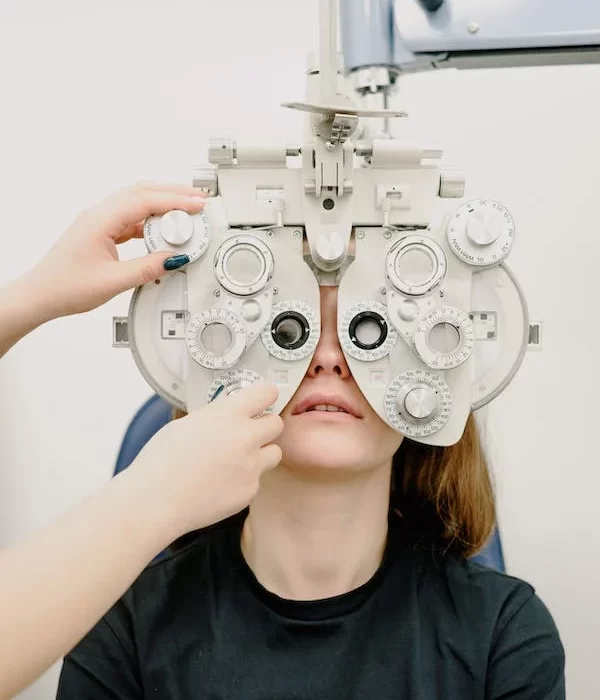
Eye Care Services
Comprehensive Eye Exams
Hillsborough Eye Care For the Whole Family
Routine eye exams are important, regardless of your age or physical health. During a complete eye exam, your eye doctor will not only determine your prescription for eyeglasses or contact lenses, but will also check your eyes for common eye diseases, assess how your eyes work together as a team and evaluate your eyes as an indicator of your overall health.
Need an Eye Exam to Update Your Prescription?
A comprehensive eye exam includes a number of tests and procedures to examine and evaluate the health of your eyes and the quality of your vision. These tests range from simple ones, like having you read an eye chart, to complex tests to evaluate retinal health.
Eye care experts in Hillsborough Eye Care recommend you have a complete eye exam every year to assess your risk for potentially damaging eye conditions, as well as to keep on top of any changes in vision you may be experiencing.
Eye Care for Everyone
How Often Do You Need to See the Optometrist, Based on Age?
The AOA recommends an annual eye exam for any patient who wears eyeglasses or contacts. If you don’t normally need vision correction, you still need an eye exam every year. Doctors often recommend more frequent eye examinations for people with diabetes, high blood pressure and other disorders, because many diseases can have an impact on vision and eye health.
Since the risk of eye disease continues to increase with advancing age, everyone over the age of 60 should be examined annually.
If you are over 40, it’s a good idea to have your eyes examined every one to two years to check for common age-related eye problems such as presbyopia, cataracts and macular degeneration.
Contact Lens Fittings and Exams
Hillsborough Eye Care for Contact Lenses
Contact lenses offer a versatile alternative to eyeglasses, catering to various lifestyles. Each patient is different, with some patients wearing contact lenses only on weekends, special occasions or just for sports.
If you decide to opt for contact lens wear, it is very important that the lenses fit properly and comfortably and that you understand contact lens safety and hygiene. A contact lens exam at Hillsborough Eye Care will include both a comprehensive eye exam to check your overall eye health, your general vision prescription and then a contact lens consultation and measurement to determine the proper lens fit.
The contact lens industry is always developing new innovations to make contacts more comfortable, convenient and accessible. Therefore, one of the initial steps in a contact lens consultation is to discuss with your eye doctor some lifestyle and health considerations that could impact the type of contacts that suit you best. We work with multiple brands to provide a wide variety of products. If you have problems seeing small print, for which you need bifocals to see close objects, you will be recommended multifocal lenses or a combination of multifocal and monovision lenses to correct your unique vision needs. If you would like to consider colored contact lenses, you will also be recommended a proper fit.
Follow-up At Hillsborough Eye Care
Your eye doctor may request that you schedule a follow-up appointment to check that your contact lenses are fitting properly and that your eyes are adjusting properly. If you are experiencing discomfort or dryness in your eyes you should visit your eye doctor as soon as possible. Your eye doctor may decide to try a different lens, a different contact lens disinfecting solution or to try an adjustment in your wearing schedule.
Contact us with any questions and to schedule your contact lens exam and fitting.
Pediatric Eye Exams at Hillsborough Eye Care
Ensure your child’s visual health with regular exams utilizing specialized techniques and technology for accurate testing. We examine children above the age of 6. Regular eye check-ups, especially for those with risk factors, are crucial for normal development and growth. Experts estimate that 5-10% of preschoolers and 25% of school-aged children may have vision problems, making regular examinations essential. According to the American Optometric Association (AOA), all children should have their eyes examined at 6 months of age, at age 3 and again at the start of school. Risk factors of vision problems include premature birth, developmental delays, turned or crossed eyes, family history of eye disease, history of eye injury, and other physical illnesses or diseases.
Digital Retinal Imaging & OCT Scans
We use cutting-edge digital imaging technology to assess your eyes. Many eye diseases, if detected at an early stage, can be treated successfully without total loss of vision. Your retinal Images will be stored electronically. This gives the eye doctor a permanent record of the condition and state of your retina.
This is very important in assisting your Optometrist to detect and measure any changes to your retina each time you get your eyes examined, as many eye conditions, such as glaucoma, diabetic retinopathy and macular degeneration are diagnosed by detecting changes over time.
The advantages of digital imaging include:
- Quick, safe, non-invasive and painless
- Provides detailed images of your retina and sub-surface of your eyes
- Provides instant, direct imaging of the form and structure of eye tissue
- Image resolution is extremely high quality
- Uses eye-safe near-infra-red light
- No patient prep required
Digital Retinal Imaging:
Digital Retinal Imaging assesses the health of your eyes by capturing high-resolution digital pictures of the retina. This provides a baseline for tracking changes in future examinations.
Optical Coherence Tomography (OCT):
OCT, an advanced imaging technique, uses light to create detailed, color-coded, cross-sectional images of the retina. This noninvasive, painless scan aids in early detection and treatment of conditions like macular degeneration, glaucoma, and diabetic retinopathy.
Visual Field Testing:
Visual Field Testing evaluates peripheral vision for blind spots or abnormalities. It involves a painless process where you respond to flashed lights. Initial screenings are simple, while comprehensive assessments utilize specialized equipment, taking 15-45 minutes to create a computerized map of your visual field.
Advanced Eye Care Services
Eye Disease Management
Ocular Disease Diagnosis and Treatment at Hillsborough Eye Care
Preserving the eyesight of our patients so they can get the most out of life is our greatest goal. Hillsborough Eye Care makes it a policy to ensure that all staff members are up-to-date on the latest technology and techniques to make your visit as comfortable and effective as possible. As optometric technology changes, it is even more important to visit an eye doctor who has all the right optometry qualifications and follows the latest developments in eye care.
Utilizing cutting edge technology, we diagnose and manage, with greater precision, diseases like Glaucoma, Macular Degeneration, Cataracts, and Diabetic Retinopathy. Earlier and more precise diagnosis means earlier treatment and better outcomes. Great advances have been made in the treatment of these diseases.
Cataract Surgery Co-Management
Cataracts are a common cause of vision loss after age 55. Learn more about recognizing cataract symptoms, protecting your eyes and understanding cataract surgery.
Diabetic Eye Disease
Diabetes and vision go hand in hand. If you have diabetes, you need to know that having this systemic disease puts you at greater risk for developing vision problems.
Glaucoma Testing & Treatment
Glaucoma is a condition that causes damage to your eye’s optic nerve and gets worse over time, so nipping it in the bud will always be better for the person being tested.
Macular Degeneration
The macula is the portion of the retina which provides sharp, central vision, and is involved in processing the fine details of the image. The breakdown of the macula is a disease called macular degeneration.
Providing Emergency Eye Care Services in Hillsborough Eye Care
We offer emergency services that require immediate and urgent eye care. If your eye is injured, don’t try to judge the severity of it. Immediately seek the opinion of an eye doctor to lessen the risk of hurting your vision. We understand ocular emergencies can arise at any time.
Please call our Hillsborough Eye Care office at 908-359-7200 for further instructions. Use your best judgment. If you feel your vision issue is urgent, do not delay treatment – visit your nearest emergency treatment center.
Symptoms that require emergency service include, but are not limited to:
- Sudden loss of vision
- Sudden double vision
- Sudden red/painful eye
- Pink Eye
- New onset flashes and/or floaters
- Foreign body in the eye (especially metal or chemicals)
- New or worsening swelling or pain after eye surgery
Things NOT to do while waiting for professional medical assistance:
- DO NOT press on an injured eye or allow the victim to rub the eye(s).
- DO NOT attempt to remove a foreign body that is resting on the cornea (the clear surface of the eye through which we see) or that appears to be embedded in any part of the eye.
- DO NOT use dry cotton (including cotton swabs) or sharp instruments (such as tweezers) on the eye.
- DO NOT attempt to remove an embedded object.
DO call our office at HIllsborough Eye Care for further instructions! We are here for you!
LASIK & Refractive Surgery Co-Management
LASIK – Laser-Assisted In Situ Keratomileusis – is the most common refractive eye surgery today. As of 2011, over 11 million LASIK procedures have been performed in the United States and as of 2009 over 28 million have been performed worldwide.
LASIK, often referred to as laser eye surgery or laser vision correction, is a type of refractive surgery for the correction of myopia, hyperopia, and astigmatism. LASIK surgery is performed by an ophthalmologist who uses a laser or microkeratome to reshape the eye’s cornea in order to improve visual acuity. For most patients, LASIK provides a permanent alternative to eyeglasses or contact lenses.
LASIK is most similar to another surgical corrective procedure, photorefractive keratectomy (PRK), and both represent advances over radial keratotomy in the surgical treatment of refractive errors of vision. For patients with moderate to high myopia or thin corneas which cannot be treated with LASIK and PRK, the phakic intraocular lens is an alternative.
LASIK is the premier surgery for vision correction. It is quick, almost painless and there is little or no discomfort after the procedure. Vision recovery is rapid – patients report seeing 20/20 within 24 hours.
LASIK corrects nearsightedness, farsightedness and even astigmatism. With a technique called mono-vision, it can reduce the need for reading glasses among patients over age 40 who wear bifocals.
After The Surgery
Following the LASIK procedure, you will use medicated eye drops and clear protective shields to cover your eyes. You can open your eyes and see well enough to walk without glasses, but you must not drive yourself home.
You will use medicated eye drops several times a day for a week or more to prevent infection and help the healing. You may also use artificial tears to keep your eyes moist and comfortable.
You should rest your eyes as much as possible the day of your surgery. You may find it more comfortable leaving the house lights on low dim.
The next day, you should see well enough to drive and resume your normal activities. Use care though not to rub your eyes until it is safe to do so. If you are currently using Latisse, discuss with your eye doctor how long after surgery to wait before re-starting the regimen.
You may be asked to return to visit your doctor the following day for an eye exam. They will want to check your vision and be sure your eyes appear to be healing as they should. You will be given any additional instructions necessary about eye drops and/or artificial tears, and you can ask the doctor any questions you may have.
Postoperative care may be performed by an eye doctor other than your LASIK surgeon. This is referred to as co-management. We are happy to provide post-operative care for you at our office through a co-management agreement with your surgeon. Ask us for further details.
If My Vision Is Blurry After LASIK…
Though most patients see clearly within a day or so after LASIK, it can take several months before your eyes completely stabilize. Until then, improvements in your vision can still occur in fits and jumps. If several months pass and your vision is still blurred, be sure to communicate and visit with your LASIK surgeon. It may be appropriate to have a second LASIK surgery -an enhancement- to sharpen your eyesight further.
If an enhancement is not required, eyeglasses or contact lenses may be used to help. We will be happy to examine your eyes and discuss the options available to you.
After LASIK Eyewear
Even if your vision seems perfect after LASIK, you may still require or be more comfortable with eyewear.
When outdoors, it’s optimal and sometimes urgent to protect your eyes from the sun’s strong and sometimes harmful rays. Use sunglasses that provide 100% UV protection. For sports-sunglasses, the lenses need to have poly-carbonate for extra strength and protection. Anytime you work with power tools or do any activity where eye injury is possible, be sure to use safety glasses with poly-carbonate lenses.
If you’re over 40 (or close), it’s likely you’ll need reading glasses after LASIK. Many LASIK patients benefit from prescription eyeglasses for night driving. Even a mild prescription will make your vision sharper for added safety and comfort at night.
After LASIK Eye Care
Remember to continue to schedule routine eye exams post-LASIK. Even with perfect vision you still need to have your eyes examined for glaucoma and other potential problems on a regular basis. Routine exams will help insure that your vision remains stable after LASIK.
Cataract Surgery Co-Management
Cataracts is a disease of the eye that results in the clouding of the lens of the eyeball. Cataracts prevent clear images from appearing on the eye’s retina; causing mild, moderate, even severe blurred vision.
Typically an eye disorder associated with aging (over half of the people in America over age 80 have either had a cataract or cataract surgery), cataracts generally occur later in life as the lens structure within the human eye changes and gets older. In addition to age, other risk factors that lead to cataracts include smoking, UV overexposure and diabetes.
During the evaluation of your eye health we will carefully examine your lens for signs of cataract formation. If a cataract is noticed and the clouding is causing visual disruption, the optometrist will refer you to a trusted and respected surgeon for surgery, which is the only known cure for cataracts. Our Eye Care Practice will be there for you providing pre and post cataract surgery care.
Cataract Surgery
Cataract surgery is the removal of the natural lens of the eye (also called “crystalline lens”) that has developed an opacification, which is referred to as a cataract. Metabolic changes of the crystalline lens fibers over the time lead to the development of the cataract and loss of transparency, causing impairment or loss of vision. During cataract surgery, a patient’s cloudy natural lens is removed and replaced with a synthetic lens to restore the transparency of the lens.
Following surgical removal of the natural lens, an artificial intraocular lens implant is inserted (eye surgeons say that the lens is “implanted”). Cataract surgery is generally performed by an ophthalmologist (eye surgeon) in an ambulatory (rather than inpatient) setting, in a surgical center or hospital, using local anesthesia (either topical, peribulbar, or retrobulbar), usually causing little or no discomfort to the patient. Well over 90% of operations are successful in restoring useful vision, with a low complication rate.
Outpatient care, high volume, minimally invasive, small incision phacoemulsification with quick post-op recovery has become the standard of care in cataract surgery all over the world.
Learn More
The more you know about cataracts, the better prepared you will be to deal with them – or help prevent them in the first place!
Myopia Control For Children
Myopia Control Starts with an Eye Exam
Regular comprehensive eye exams for your child at all stages of their development is extremely important to ensure a child’s vision will develop as it should and to diagnose any eye conditions that may be affecting your child. There are many eye conditions, such as strabismus and amblyopia that can be corrected easily if caught early but can do irreversible damage that will affect a child into adulthood if left undiagnosed and untreated for too long. However, one of the leading causes of ocular disease in adults that continues to progress is myopia or nearsightedness.
Myopia Control May Include:
- Orthokeratology (“ortho-k”) or Corneal Refractive Therapy
- Atropine Drops
- Multifocal contact lenses
- Multifocal eyeglasses
Slow or Stop Myopia Control
While nearsightedness or myopia for many has been corrected through glasses or contact lenses, a modern concept has developed called Myopia Control. Myopia control is oriented to slow down or stop the progression of myopia since over the past few decades myopia has increased at an alarming rate. Unfortunately, the percentage of moderate to high myopia has grown in number and myopia control is becoming a major consideration for parents & their child’s eye health.
Levels of Myopia:
- Mild myopia: -0.25 to -3.00 D
- Moderate myopia: Between -3.00 to -6.00 D
- High myopia: More than -6.00 D
Myopia Control Prevents Risk of Ocular Disease
Cataracts:
The rate of progression of myopia has been linked to the development of cataracts. The higher the level of myopia in a child, the faster the rate cataracts can develop when they get older.
Glaucoma:
Glaucoma is when the eye develops an unusually high pressure, where this pressure can damage the optic nerve and cause vision loss. Studies have shown that nearsighted people have a 2-3x greater risk at Glaucoma.
Detached Retina:
Levels of myopia also have a correlation to detached retinas. A detached retina is when the retina pulls away from the eyes tissue, often resulting in permanent vision loss.
Myopia Control Starts with You – The Parent
Your child’s eyes are his/her gateway into the world of learning. When your child’s vision is not functioning properly, learning and participation in recreational activities will suffer. Children are not likely to recognize vision problems like myopia, and it is, therefore, the responsibility of parents and teachers to recognize signs of visual problems in their children.
Children’s Eyesight May Change, Less Often With Myopia Control
Because changes in your child’s vision can occur without you or your child noticing them, your child should visit the eye doctor every year or more frequently if specific problems or risk factors exist. Myopia control attempts to reduce the number of changes that may occur in your child’s vision. With a successful myopia control program, an eye doctor can provide your child with amazing vision, track your child’s rate of myopia, and provide a clear road to healthy eyesight and a successful future.
Eyeglasses and Contacts
Frames & Lenses at Hillsborough Eye Care
Eyeglasses are an optical device as well as a fashion accessory. Lightweight and flexible materials such as modern plastics and titanium allow for wonderful colors and materials that can be fabricated into unusual and stylish shapes. High tech lens materials offer multiple options for the very best vision possible.
At Hillsborough Eye Care, we offer a wide variety of both frames and lenses.
Our highly skilled optician and associates will assist you in the selection of your frames to fit your face and your style as well as your prescription. We are skilled in assessing your specific vision needs and matching your needs to the great variety of lens and frame options available today.
Our full service in-office laboratory can fabricate most prescriptions. We realize that the most precise ophthalmic prescription written by our eye doctors is only as good as the glasses that are made from that prescription. We provide access to the most current lens designs available today which improve both cosmetic appearance and visual function. Working with state of the art lens technology with Zeiss and Essilor, we offer super thin high index lens materials, high quality progressives, bifocal lenses, photochromatic “transitions” lenses, and a great selection of almost 700 contemporary and designer frames. These products and services allow our patients to both see great and look great with their glasses.
Unique Frame Lines at Hillsborough Eye Care
We have the ability to provide our patients with a variety of unique and exclusive eyewear frame designs that simply can not be found anywhere in our area! These frame lines provide exceptional style and specialized function to make your eyewear experience something very special. We carry fashionable lines such as Gucci, Tom Ford, Jimmy Choo, Saint Laurent and Burberry. In addition, unique lines such as Prodesign Denmark, WooW, Gotti, Vernon Gantry and Coco Song bring you something different and wonderful in stylish and functional eyewear.
Titanium Frames
This space age material was developed by NASA for use in the space shuttle. It is very lightweight, yet is the most durable material in frames available today. Other advantages of titanium frames is the resistance to corrosion and allergic responses so common with other metal frame materials. Also, titanium can be treated to produce a wide variety of interesting fashion colors.
High Index Super Thin Lenses
New high index and super high index lens materials allow us to fabricate lenses thinner and lighter than ever before. There are basically two types of high index materials. The first is polycarbonate. This is known for being as light as a feather. It is thinner than traditional plastic by 20% to 25%. It is the lightest weight lens material and the most impact resistant. It is the most economical of the high index materials. The second material is 1.60 high index; it is about 30% to 35% thinner than conventional plastic lenses.
The thinnest of all materials is super high index. This material is over 40% to 45% thinner than conventional plastic lenses. This material is often made in what is known as aspheric curves, which keep the lens as thin as possible while maintaining optical excellence. There are three levels of super high index; 1.67, 1.71 and 1.74. Our optical staff at Hillsborough Eye Care will help you decide which lens is best for your prescription and lifestyle.
Polarization
A fantastic development in lens technology for sunglass lenses allows over 99% light transmission with dramatic reduction in glare. These lenses absorb over 98% of both harmful UVA and UVB radiation. Patient satisfaction responses to polarized sunglasses have been overwhelming.
Transitions Lenses
New lightweight plastic photochromatic lenses are able to change from light to dark tint in just a moment. These lenses lighten to about a 10% tint without UV and darken to a 70% tint when exposed to the UV rays of the sun. Now many patients can avoid the trouble of having two pairs of glasses while still taking advantage of virtually all lens designs such as invisible bifocals, thin lenses, etc. and still have the UV protection of prescription sunglasses all in one pair.
Progressive Addition Lenses
New designs of these “invisible” bifocals are easier to adapt to and provide a continuous range of vision from far into near without the need for lines in your glasses. Progressive lenses come in thin designs and Transitions photochromatic styles. We use only the highest quality progressive lens designs available, which provide the optimum vision performance for our patients.
Anti Reflective Coatings
Anti Reflective (AR) coatings are applied to lenses in order to increase total light transmission and reduce reflected light from the surface of lenses. This results in reduced glare, which is especially helpful at night when driving, as well as a marked improvement in the appearance of the lenses. Those annoying surface reflections noticed when looking at the eyes of someone wearing glasses without AR coating are virtually eliminated
Computer Glasses
Specific ophthalmic lens prescriptions can be designed to reduce the demands on your eyes during computer use. These lenses are prescribed to function at the distance that you work on your computer, which is typically different than your normal reading distance. A number of specialized lens designs have been developed to create the most comfortable work environment for you, thus allowing you to work more efficiently at your computer with far greater comfort. Some of the lens designs we use include:
- Single Vision Lenses – specially designed for your specific computer working distance
- High Fitting Bifocal Lenses – allows you to see your computer through a large diameter bifocal section (we set the bifocal power for your computer distance), and also allows you to look above “the line” to look at distance on occasion (to view TV or other people in your office location)
- Occupational Bifocal Lenses – fit to give you computer screen vision through the top section of the lens, and closer reading material vision in the bifocal portion.
- Progressive Lenses – regular progressive lenses are generally wonderful for everyday use and for those that spend very limited periods of time on the computer. The area that provides computer vision however is relatively narrow and can be problematic for many of those who spend great amounts of time at the computer.
- Office Lenses – are designed to provide very large areas for computer distance and near vision, but a smaller and narrower area towards the top of the lens (designed for limited distance use). These lenses are great at the desk, at the computer, for reading, and for limited distance viewing (out to about 15 feet or so) around the office.
ZEISS Office lenses
Made to reduce your eyes’ workload.
We offer ZEISS Office lenses: they’re perfect for any situation that requires you to focus at fixed distances for long periods of time.
Quality Sunglasses
What Is UV Radiation?
For all the wonderful things the sun makes possible, you also need protection from its rays. The principal danger posed by the sun is in the form of ultraviolet (UV) radiation. UV radiation can also be given off by artificial sources like tanning beds, lasers and welding machines. There are three types of UV radiation: UV-A, UV-B and UV-C. UV-A and UV– B radiation penetrate the earth’s atmosphere and their levels are now reported on the daily weather reports in the news. The earth’s ozone layer used to filter out UV-C radiation, but with the thinning of the ozone layer even UV-C is an added threat to our UV exposure.
What You Can’t See Can Hurt You
You are probably aware of the danger posed by UV radiation to your skin, but you may not realize that the exposure to any type of UV radiation can harm your eyes and affect your vision as well. More and more scientific evidence conclusively shows that exposure to UV-A, UV-B and UV-C has adverse long and short term effects on your eyes and your vision. If you are exposed while unprotected to excessive amounts of UV radiation over a short period of time, you are likely to experience photokeratitis that includes symptoms of pain, tearing and extreme light sensitivity. Long term exposure to any of the types of radiation can cause more serious damage including cancer, cataracts, macular degeneration and retinal damage. This damage to the retina is usually not reversible.
How Can You Protect Your Eyes?
You can protect your and your family’s eyes by making sure everyone wears quality sunglasses. Quality sunglasses have lenses that block 100% of the UV-A, UV-B and UV-C radiation while providing clear and distortion free vision. They should screen out 70—90% of visible light, be perfectly matched in color (grey, brown or green) and free from imperfections. Then make sure everyone wears them during sun exposure just like you would wear sunscreen for the skin.
Why Can Cheap Sunglasses Harm Your Eyes?
Poor quality sunglasses block some but not all UV light to the eyes. Being unregulated by the FDA, tags on sunglasses can say “100% UV block” but that does not indicate which type of UV is blocked or for how long. For example, cheap sunglasses might have only 100% UV-A blocked but 0% block for UV-B or UV-C. Many of these cheaper sunglasses have a sprayed on UV coating which can be washed off after the first few times you clean your glasses. Meanwhile, the dark tint of the lenses remains causing your pupil to dilate. This allows your eyes to receive even greater doses of UV radiation than if you did not wear sunglasses at all! Poor quality sunglasses do not filter out direct or reflected glare creating a visual pollution that degrades the clarity of your vision. Cheap sunglasses are not made of optically ground glass or plastic but molded plastic that creates visual distortions that can leave you with eyestrain.
Contact Lens Designs
Soft contact lenses (both standard hydrogel and silicone hydrogel lenses) are available in a variety of designs, depending on their intended purpose:
Soft contact lens designs
- Spherical contact lenses have the same lens power throughout the entire optical part of the lens to correct myopia (near-sightedness) or hyperopia (far-sightedness).
- Toric soft contact lenses have different powers in different meridians of the lens to correct astigmatism as well as near-sightedness or far-sightedness. [Read more about Toric contact lenses.]
- Multifocal contact lenses (including bifocal contacts) contain different power zones for near and far vision to correct presbyopia as well as near-sightedness or far-sightedness. Some multifocal lenses also can correct astigmatism. [Read more about bifocal contacts.]
- Cosmetic contact lenses include colour contacts designed to change or intensify your eye colour. Halloween, theatrical and other special-effect contacts also are considered cosmetic lenses. A contact lens prescription is required for cosmetic contacts even if you have no refractive errors that need correction.
All of these lenses can be custom made for hard-to-fit eyes. Other lens designs also are available — including lenses fabricated for use in special situations, such as correcting for keratoconus.
Which Contact Lens Is Right for You?
First, your contacts must address the problem that is prompting you to wear lenses in the first place. Your contact lenses must provide good vision by correcting your myopia, hyperopia, astigmatism, or some combination of those vision problems.
Second, the lens must fit your eye. To do that, lenses come in tens of thousands of combinations of diameter and curvature. Of course, not every lens brand comes in every “size.”
Our doctors are skilled in evaluating your eye’s physiology, and your eyesight, to determine which lens best satisfies the two criteria above.
Third, you may have another medical need that drives the choice of lens. For example, our doctors might pick a particular lens if your eyes tend to be dry.
Finally, consider your “wish list” of contact lens features — colours, for example, or overnight wear.
When you and our doctors decide on the right lens for you, you’ll be given a contact lens prescription.
Contact Lens Problems
Trial and error is often involved in finding the perfect lens for you. People react differently to various lens materials and cleaning solutions.
Also, the correct “parameters” of your lens — that is, power, diameter, and curvature — can be finalized only after you’ve successfully worn the lens. This is especially true for more complex fits involving extra parameters, such as with bifocals or Toric contact lenses for astigmatism.
If you experience discomfort or poor vision when wearing contact lenses, chances are that an adjustment or change of lens can help.
Today, more contact lens choices than ever are available to provide comfort, good vision, and healthy eyes. If your eyes or lenses are uncomfortable or you are not seeing well, remove your lenses and call us to explore available remedies for contact lens discomfort.
Buying Contact Lenses
You can buy replacement contact lenses at many places, and some offer a better value than others. However, we have made the entire process easy for you. Order contacts with us today. You will not have to shop around. We will apply your insurance benefit, ship directly to your home and make sure you never run out of your contacts.
“Envision optimal health: Nurture your Eyes, Nourish your Body”


